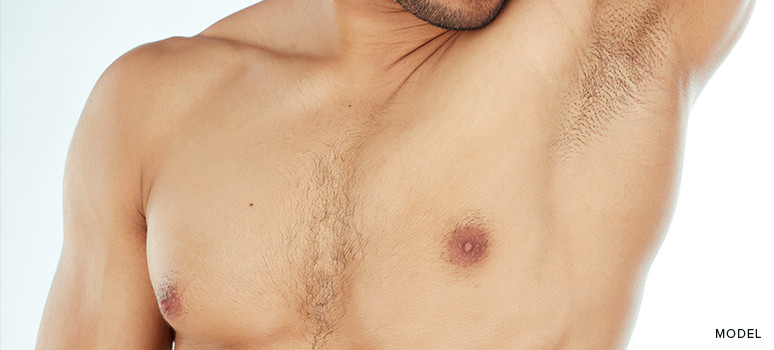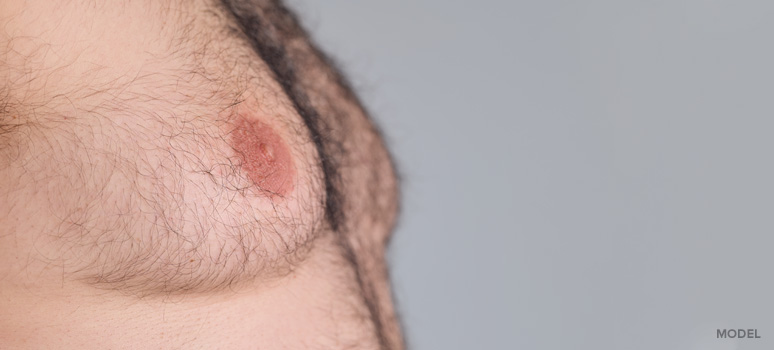Are you one of the many men who have taken the brave step towards confidence by undergoing gynecomastia surgery? While the procedure itself marks a significant milestone, the journey doesn’t end in the operating room. The post-operative phase is crucial for ensuring optimal results, minimizing discomfort, and achieving the sculpted chest you’ve envisioned. Many men find themselves searching for reliable information to navigate this period effectively. This comprehensive guide will walk you through everything you need to know about post-gynecomastia surgery recovery, from immediate aftercare to long-term results, ensuring you’re well-equipped for a smooth and successful healing process. At Memorial Plastic Surgery, we understand the importance of this phase, and we’re here to provide you with the expert knowledge to achieve the best possible outcome.
Understanding the Immediate Post-Op Period:
The first few days following gynecomastia surgery are pivotal. Expect some swelling, bruising, and discomfort as your body begins the healing process. Pain management is essential during this time. Your surgeon will prescribe pain medication to help alleviate discomfort. It’s crucial to follow their instructions precisely. Additionally, compression garments are typically worn to minimize swelling and support the chest area. These garments play a vital role in shaping your new chest contour and reducing fluid buildup.
- Actionable Tip: Keep a journal of your symptoms and medication intake. This will help you track your progress and communicate effectively with your surgeon during follow-up appointments.
Managing Swelling and Bruising
Swelling and bruising are normal side effects of gynecomastia surgery. To minimize these effects, consider the following:
- Cold Compresses: Apply cold compresses to the chest area for 15-20 minutes at a time, several times a day, during the first few days.
- Elevation: Keep your upper body elevated, especially while sleeping. Use extra pillows to prop yourself up.
- Rest: Avoid strenuous activities and heavy lifting for at least a few weeks. Rest is crucial for allowing your body to heal.
- Detailed Explanation: Swelling occurs as a natural response to tissue trauma. Cold compresses help constrict blood vessels, reducing blood flow to the area and minimizing swelling. Elevation helps drain excess fluid, further reducing swelling.
Wound Care and Hygiene
Proper wound care is essential for preventing infection and promoting healing. Follow your surgeon’s instructions regarding dressing changes and hygiene. Keep the incision sites clean and dry. Avoid soaking in bathtubs or swimming pools until your surgeon clears you.
- Actionable Tip: Gently pat the incision sites dry after showering, and avoid rubbing. Use antiseptic solutions recommended by your surgeon.
Managing Discomfort and Pain
While pain medication helps manage initial discomfort, you may experience lingering soreness. Here are some tips to alleviate pain:
- Gentle Movement: Light walking can improve circulation and reduce stiffness. Avoid overexertion.
- Proper Posture: Maintain good posture to minimize strain on your chest muscles.
- Relaxation Techniques: Practice deep breathing exercises or meditation to manage pain and stress.
Returning to Normal Activities
The timeline for returning to normal activities varies depending on the individual and the extent of the surgery. Generally, you can expect to return to light activities within a week or two. However, strenuous activities and heavy lifting should be avoided for several weeks.
Detailed Explanation: Healing is a gradual process. Pushing yourself too hard too soon can lead to complications and prolong recovery.
Long-Term Results and Maintenance
Gynecomastia surgery offers long-lasting results, but maintaining a healthy lifestyle is crucial. Regular exercise and a balanced diet can help prevent the recurrence of gynecomastia.
- Before and After: “Many of our patients at Memorial Plastic Surgery have reported a significant boost in confidence after their recovery. They find themselves more comfortable in their own skin, and this positive change extends to various aspects of their lives.”
Potential Complications and How to Address Them
While gynecomastia surgery is generally safe, potential complications can arise. These include:
- Infection: Watch for signs of infection, such as redness, swelling, and increased pain.
- Hematoma: A collection of blood under the skin.
- Scarring: Proper wound care can minimize scarring.
- Asymmetry: Slight asymmetry is normal, but significant asymmetry may require revision surgery.
- Actionable Tip: Contact your surgeon immediately if you experience any concerning symptoms. Early intervention can help prevent complications.
Choosing the Right Surgeon and Clinic
For those considering or recovering from post gynecomastia surgery in Houston, Texas, and the surrounding areas, including Sugar Land, Katy, and The Woodlands, it’s essential to seek expert care. At Memorial Plastic Surgery, patients benefit from the extensive experience and skill of board-certified surgeons like Dr. Patrick Hsu, Dr. Kendall Roehl, and Dr. Vasileios Vasilakis. Their dedication to achieving optimal results and providing comprehensive post-operative care ensures patients receive the highest standard of treatment, tailored to their individual needs. Whether you’re in the heart of Houston or a neighboring city, the expertise of these surgeons provides a trusted resource for your gynecomastia recovery journey.
Conclusion
Navigating post-gynecomastia surgery recovery requires patience, diligence, and proper care. By following the guidelines outlined in this comprehensive guide, you can ensure a smooth and successful healing process, leading to the sculpted chest and renewed confidence you desire. Remember, at Memorial Plastic Surgery, we are dedicated to providing you with the highest level of care and support throughout your journey. Request a consultation today!










